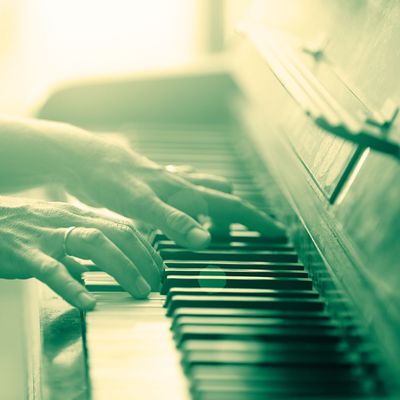
Take a second and think of something you’re good at, or at least decent. It has to be something concrete, a skill that involves your hands or arms or legs; listening doesn’t count, for example, but cooking does. Yes, you’re using your brain to think of recipes and understand how flavors come together (even at the most basic level – you wouldn’t put sugar on SpaghettiOs, right?), but you’re also stirring and chopping and sautéing, or at least cranking a can opener and turning the knob on a stove.
When it comes to skills that involve some physical component, psychologists have traditionally believed that two separate types of long-term memory are at work. One is declarative memory, or the ability to recall facts and events — how many teaspoons make a tablespoon, for instance, or that secret ingredient you add to jazz up an old family cookie recipe. The other is non-declarative memory (sometimes called procedural memory or muscle memory), the implicit knowledge of how to use objects or make specific movements — how to use a knife and fork, or the jerk of the arm that helps you flip an omelet.
But an amnesiac woman named Lonni Sue Johnson complicates this neat division. In a new paper in the journal Cognitive Neuropsychology, a team of psychologists document the strange case of her memory loss — and, equally as importantly, the memories she retained.
Johnson (identified in the paper as LSJ), a 64-year-old professional artist, amateur violinist, and licensed pilot, developed amnesia after a bout of viral encephalitis severely damaged her temporal lobe, an area of the brain involved in long-term memory processing. The disease left her with “catastrophic retrograde memory impairment,” the authors wrote, wiping out both her recollection of her own past and her “general world knowledge” of everyday facts and concepts.
Oddly, though, she retained specific snippets of declarative memory related to the skills of her pre-illness life (she no longer flies, or even drives, and now dabbles in art and music to a much more limited extent). Most of the background knowledge was gone, but the technical knowledge remained: Johnson couldn’t identify Vincent van Gogh, but she knew the specifics of painting techniques, like how to remove excess paint or how to layer colors.
“There is such a contrast between her not being able to tell us anything about her former life and not being able to tell us anything about many aspects of art and music that she once knew well, but when we ask her to tell us how to do a watercolor, she is articulate and full of detail,” Barbara Landau, a professor of cognitive science at Johns Hopkins University, said in a statement.
To measure the extent of her skill-related memory, the paper’s authors asked her a series of questions about art, music, aviation, and driving — things like “What is an arpeggio?” and “Where are the rudder controls located in the cockpit?” and “What pedal would you use to increase the speed of your vehicle?” For comparison, they also asked the same questions of beginners and experts in each field. In all categories, Johnson outperformed the beginners; in art and driving, she scored as well as the experts.
“Although Johnson had not created watercolors, had not flown a plane, and had not driven since her illness, she could still describe how one would go about carrying out these activities,” said Johns Hopkins cognitive scientist Michael McCloskey said in the statement — even though, based on our current divisions of memory, she shouldn’t have. “These findings suggest that skill-related knowledge can be spared even with dramatic losses in other kinds of knowledge.” They also hint at how much we still don’t know about how we come to know things, and about the interplay between our brains and bodies in preserving our abilities.




